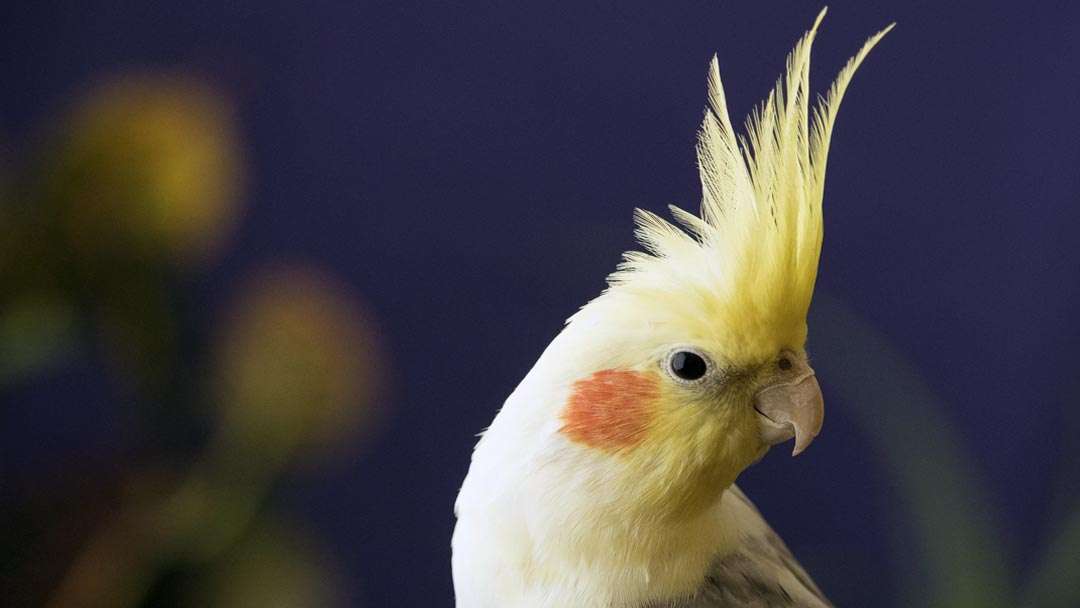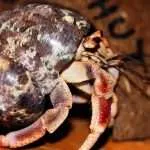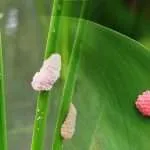Whether your love for pet birds is on the high, low or moderate side, I believe the Cockatiel is one bird you’ll fall in love with at first sight.
This bird will captivate you with its beauty and the various skills it possesses.
By the time you’re through reading this article, you might want to adopt a Cockatiel ASAP.
The Cockatiel, which can be a pet for adults and kids, brings joy and life to its owner and colors its home with its beauty.
They can be trained to learn and perform any tasks because they are intelligent and will easily entertain you for small rewards.
Cockatiels originated from Australia and are the second most popular pet bird with the Budgerigar taking the number one spot.
Cockatiels are from the same family of the Cockatoo (you’ll see the similarities in their crest) and are the smallest of the family.
They can grow up to 12 inches – 30 cm long.
They are very social, enjoyable and love to interact with humans.
Cockatiels come in different color mutations. This means you have a variety to choose from when you decide to adopt one as a pet.
When in the wild, they are usually grey but you’ll find them in color yellow, white and other mixed colors.
Continue reading to know how you can adopt one, how to care for your Cockatiel and some interesting things to know about the Cockatiel.
Cost of a Cockatiel
The Cockatiel is one of the most popular birds you can have as a beginner pet. Its popularity makes it easy to purchase and less expensive than most other birds.
The cost will depend on your location of adoption but whatever the location is, I’m sure the price of adopting one will not put you in a financial mess.
When you’re ready for adoption, you should get one from your pet store or animal rescuers.
However, you must visit a veterinarian after adoption for a check-up. Cockatiels don’t show signs of illness as quick as possible and they can carry some transmittable diseases.
It is necessary to x-ray, blood and stool tests be carried out to eliminate any underlying illness or disease.
Cockatiel Care Guide
Caring for Cockatiel entails diet and general health of the bird, getting your bird a cage, the social life of the bird amongst other things.
Diet:
Your Cockatiel needs food to survive and when I say food, I don’t mean seeds. People think seeds are the only thing the Cockatiel – or birds in general – needs to survive.
Well, that’s not true.
When birds are left in the wild, they feed on a variety of things which helps them survive and keeps them healthy.
Cockatiels will eat pellets, fresh fruits, and vegetables. Pellets constitute 70% of the Cockatiels diet while fruits and vegetables take 30%.
You can feed your Cockatiel apples, melon, banana, leafy greens every once a week.
When you feel like giving your bird a special treat, you can feed it a honey stick or millet spray.
Most importantly, fresh and clean water should be made available too.
Not all foods are good for your Cockatiel. Foods such as avocado, onions, chocolate should not be given to the bird. They are not easily digestible.
Cockatiel Cage

You can’t leave your Cockatiel to fly around your house, consider it might fly into something and get injured or killed. So, you need a cage for your bird.
Some people think that the Cockatiel should be in the cage when it’s time for food and sleep and should be allowed to fly and move every other time. This is entirely up to you to decide what works best for your bird.
The Cockatiel’s cage should be at least twice the size of the bird’s wingspan. If you’ll be having two Cockatiels, the cage size should be increased.
The cage should not be located in an isolated place in your house. Remember the Cockatiel is social and loves to interact, as such, the cage should be placed close to where the family gathers frequently – living room or bedroom.
Don’t put the cage in the kitchen. Birds are very sensitive to the strong smell and the cooking fumes from your kitchen will affect your bird.
Cage Setup
The cage should have a cage liner or corncob, aspen or recycled-paper bedding which should be kept clean at all times.
The cage should have at least 2 perches – where your bird can stand on – of different heights, texture, and thickness. This will help keep the feet of your bird healthy.
The perch should not be placed directly above the bird’s dining table – where it eats. Droppings can drop into the food or water and can get contaminated.
You can also decorate your Cockatiel’s cage with toys to help stimulate their brains and to keep them busy. You should know that your bird does not sit still in the wild, it will get involved in different activities.
You’ll need to get your bird a source of Vitamin D and this can be gotten by installing an ultraviolet light around the cage.
That’s pretty much about the cage.
Health:
Your Cockatiel can become sick and can only be treated by taking the bird to see a vet.
One important thing about the health of your bird is to carry out tests after adoption. This will allow you to know how healthy your bird is and what or what not to do.
Cockatiels do not show signs of illness on time until they get very sick. To avoid this, you’ll need to visit the vet occasionally.
Your Cockatiel will show signs of illness such as sneezing, runny droppings for more than two days, weight loss (which may be as a result of not eating well), reduced appetite, sitting at the bottom of the cage and discharge for the mouth or nose.
Cockatiels suffer from aging problems – meaning as it grows old, it will develop some issues such as kidney problem.
They can also have a bacterial infection and nutritional deficiencies.
Another health issue, which is particular to female Cockatiels, is egg binding – when eggs get stuck in the reproductive tract. You see, Cockatiels are very active and can produce eggs every 48 hours and they can lay up to 30 eggs.
This also makes the bones weak and sometimes leads to paralysis.
To avoid any health condition, visiting the vet from time to time is essential.
Six Awesome Facts about the Cockatiels
There are so many things interesting about Cockatiel birds as pet. I’ll only mention my top six interesting facts. They are:
#1 – Recognition of Owner
Cockatiels can recognize its pet parent and this can only be achieved by bonding with your bird. No matter how many people surround the Cockatiel, it will only bond with one person, most likely the pet parent.
This doesn’t mean your Cockatiel will ignore and disregard every other person in the house, it only means the bird recognizes its pet parent and will bond with just that person.
#2 – Intelligence
Cockatiels are not only social but also intelligent enough to learn commands. Also, they can learn new things and tricks as taught by their pet parents or happenings around them.
Your Cockatiel pet will sing or whistle a song to you, whether they heard it from you or from somewhere else. They also will dance when taught to.
It’s not uncommon to see a Cockatiel taking or saying things heard repeatedly. So, watch your utterances when with your bird or what you’re exposing your bird to.
#3 – Ability to talk
The Cockatiel is famous for singing and also whistling. When taught, the Cockatiel can whistle an entire song.
The Cockatiel will sing – and perform anything – just for the reward. If trained properly, the Cockatiel can talk.
Generally, compared to the female Cockatiel, the male Cockatiels are good singers and talkers. Male Cockatiel makes use of its vocals skills to get the attention of the female Cockatiel.
#4 – The lifespan of the Cockatiel
The Cockatiel requires adequate care for it to live healthy and long. The Cockatiel can live up to 2 decades when taken care of properly – with regards to its diet, health and keeping it happy.
In the wild, it will live up to 10-15 years.
#5 – Cockatiels love to live with a partner
Cockatiels are social animals and love to have companionship, whether with its pet parent or a partner. Cockatiels get easily bored if they don’t get to socialize for a long period.
Pairing two Cockatiels is a great way to make the bird happy and healthy. You can pair a male and a female Cockatiels together. Cupid might visit them one day turning them into love birds.
Also, you can get more than two Cockatiels to keep each other’s company.
You, however, must not pair the Cockatiel with another bird in the same cage. This simply will not work as your bird might get aggressive with it.
#6 – Social Life
Cockatiels are very social and love to interact with everyone and everything in their environment.
It is through the attention given to the Cockatiel that helps it bond with its pet parent.
As a pet parent, if you’ll be unable to spend time – and I mean a lot of time – with your Cockatiel, it’s advisable to get it a companion, another Cockatiel.
Imagine if you’re left alone, with no form of socialization or interaction with anyone, overtime, you’ll get aggressive or depressed. The same thing applies to your Cockatiel.
When Cockatiels are ignored or left alone – without any form of socialization – for a long time, they get angry, depressed and this can affect their health.
Try to spend at least an hour or two holdings and playing with your bird.
Other things to note:
The Cockatiels are not so loud like other parrot family members or the macaws.
If you want a loud Cockatiel, you should adopt a male – they are louder, through their singing and whistling than female Cockatiels.
You can read the mood of your Cockatiel through its crest which usually raises or lowers. You get to understand the meaning of the crest as you get to know the bird.
Cockatiel Temperament
When the crest is up, your bird is at alert or this shows something startled it; whenever the crest is in the middle, your bird is feeling okay, fine and content.
Moreover, when your bird is in an angry or aggressive mood you will see that the crest is laid back flat.
You should leave the bird alone at this point because it might bite you.
Your Cockatiel will sometimes hiss (like a snake) and is a warning sign that you should stay away.
Cockatiels enjoy being petted and will always show you where it should be touched.
Whenever they want you to pet them, they usually lower their heads and let you put your hand on their cheek or the lower part of their beak.
You can give your Cockatiel a bowl of water for bathing, at least twice a week. If your bird refuses to bath itself, you get a clean spray bottle and mist your bird with warm water.
You can turn on the TV or radio for your bird to entertain or educate them.
As a rule, when handling the Cockatiel, children should be supervised
Cockatiel Pet and Social Behavior
When it comes to parenting, the Cockatiel father is better at the job than the mother. Cockatiel fathers are more nurturing and affectionate with the new-borns.
The mother is responsible for the hatching of eggs and caring for her young but the father is more protective of the young Cockatiels.
Cockatiel’s feather has an abundance of bird dust – a layer of fine and white dust – that comes from the feathers that grow close to the bird’s skin.
It’s not uncommon to find your environment with these fine particles. It’s not an issue for most people but it can affect people with asthma and other respiratory issues. Bating your Cockatiel frequently will reduce this.
That’s pretty much everything – almost everything – you need to know about the Cockatiel. There’s a lot you’ll learn by paying keen attention to your bird, that’s the only way your pet and yourself can have a healthy relationship.
A visit to your vet or your local pet store will clarify anything that’s not clear to you or that I missed.







